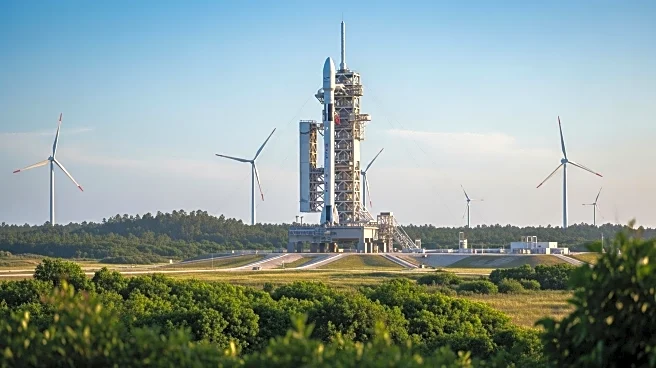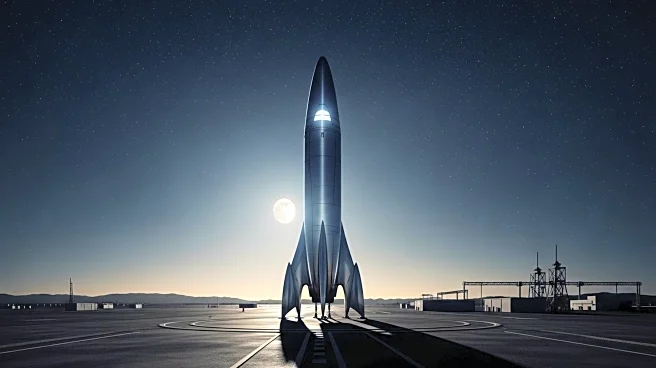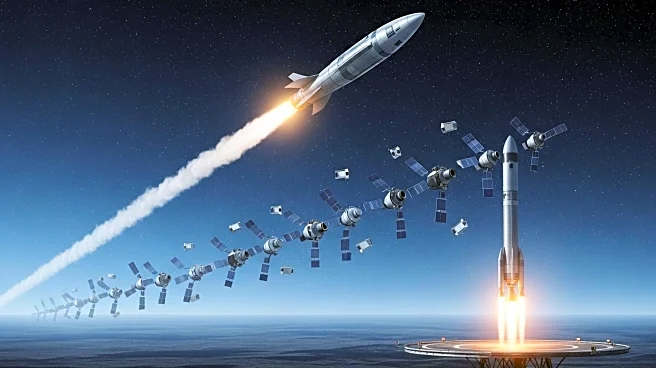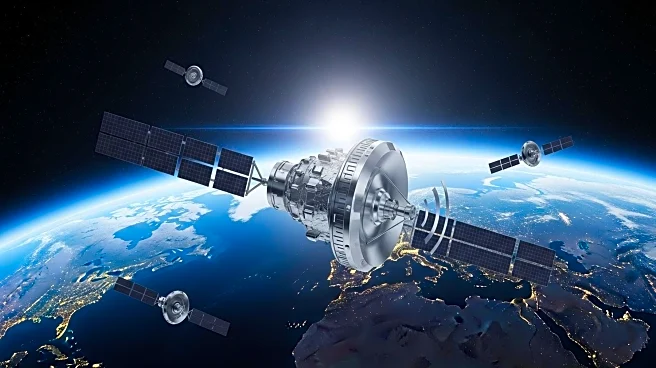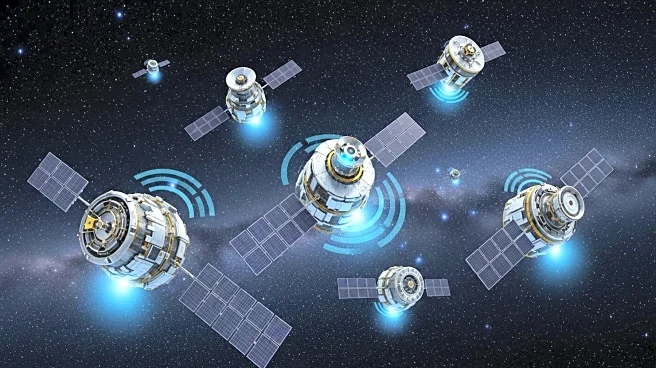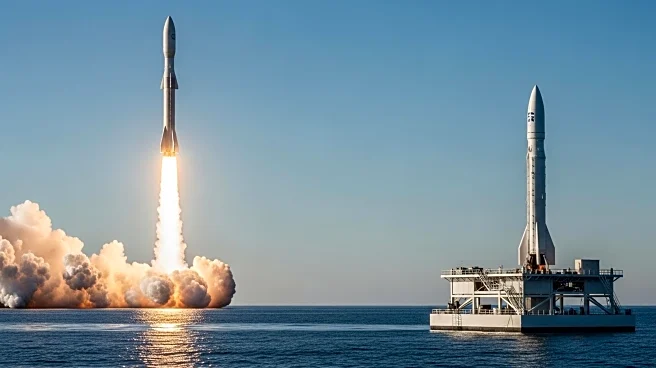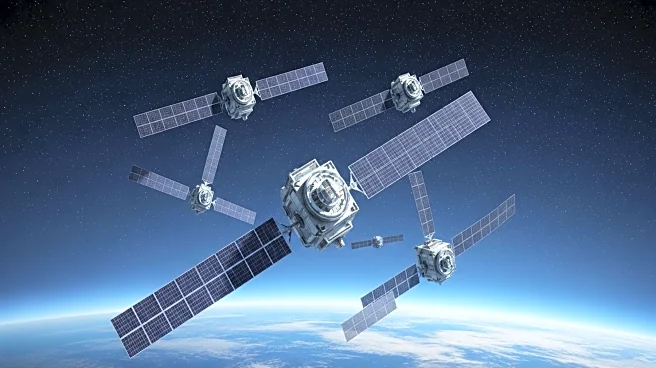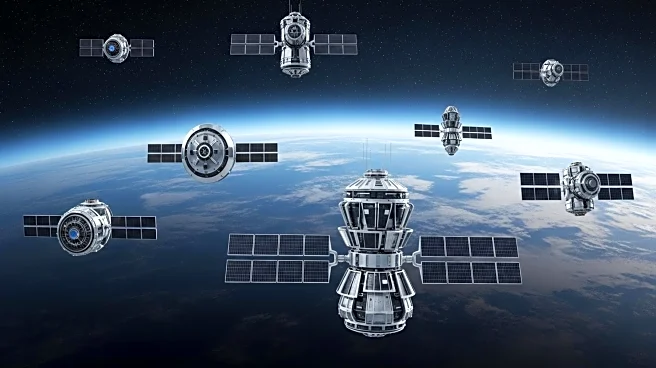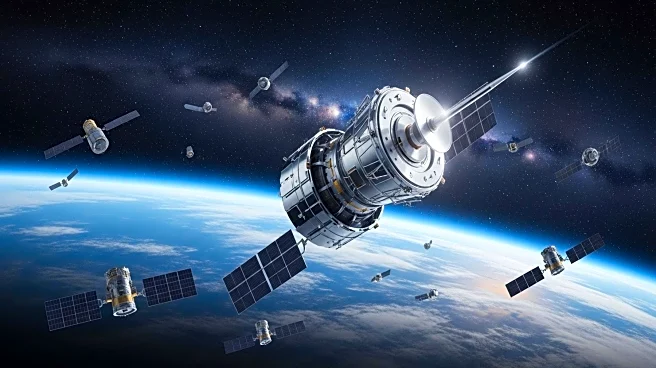What's Happening?
SpaceX successfully launched 50 Starlink internet satellites over a weekend from Vandenberg Space Force Base in California. The launches, conducted on September 25 and 27, 2025, were part of SpaceX's aggressive expansion of its Starlink megaconstellation, which now includes approximately 8,500 operational satellites. The Falcon 9 rockets used for these missions successfully landed their first-stage boosters on the Pacific droneship 'Of Course I Still Love You.' Despite these achievements, SpaceX faces regulatory hurdles, including a unanimous vote by California's Coastal Commission against increasing the number of annual launches at Vandenberg due to environmental concerns. Additionally, a coalition of conservation groups has sued, claiming the FAA did not complete a full environmental review for Starship launches, although a federal court recently dismissed the suit.
Why It's Important?
The expansion of SpaceX's Starlink network is significant for global internet connectivity, particularly in underserved and rural areas. The company's ability to launch satellites at a rapid pace gives it a competitive edge over rivals like Amazon's Project Kuiper, which has only recently begun deploying its own satellite network. However, the regulatory challenges SpaceX faces highlight the tension between technological advancement and environmental protection. The outcome of these regulatory battles could impact SpaceX's future operations and its ability to maintain its current launch cadence. The company's plans to expand into mobile networks with a $17 billion purchase of wireless spectrum further underscore its ambitions to dominate the satellite internet market.
What's Next?
SpaceX plans to continue its high launch cadence, with more Starlink satellites expected to be deployed in the coming months. The company is also preparing for an 11th test launch of its Starship rocket in October 2025, aiming to replicate its recent successful flight. Meanwhile, SpaceX will need to address ongoing regulatory and environmental challenges, particularly in California and Texas, where its launch facilities are located. The company's ability to navigate these challenges will be crucial in maintaining its leadership in the space industry and achieving its long-term goals, including supporting NASA's Artemis moon program.
Beyond the Headlines
The regulatory challenges faced by SpaceX highlight broader issues in balancing technological progress with environmental stewardship. The company's expansion plans have sparked debates about the environmental impact of increased launch activities, including concerns about noise pollution and space debris. These issues underscore the need for comprehensive environmental assessments and regulatory frameworks that can accommodate the rapid pace of technological innovation while protecting natural resources. The outcome of SpaceX's regulatory battles could set precedents for future space industry operations and influence public policy on environmental protection in the context of space exploration.


